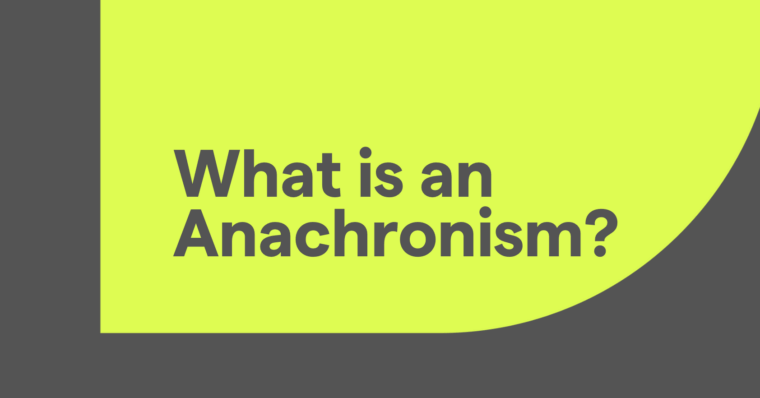
An analytical essay is an essay that meticulously and methodically examines a single topic to draw conclusions or prove theories. Although they are used in many fields, analytical essays are often used with art and literature to break down works’ creative themes and explore their deeper meanings and symbolism.
Analytical essays are a staple in academics, so if you’re a student, chances are you’ll write one sooner or later. This guide addresses all the major concerns about how to write an analytical essay, such as the preferred structure and what to put in the outline. Let’s start with an in-depth answer to the question, what is an analytical essay?
What is an analytical essay?
One of the seven main types of essay, analytical essays intricately examine a single topic to explain specific arguments or prove the author’s theories. They commonly deal with creative works like art, literature, film, or music, dissecting the creator’s artistic themes and revealing hidden meanings. However, they can also address other issues in realms like science, politics, and society.
Analytical essays are a type of expository essay, so they’re not supposed to express bias, opinions, or persuasions. Even when the author is trying to prove their own theory (or disprove an opposing theory), their argument should stick solely to facts and logic and keep the author’s personal feelings to a minimum.
An analytical essay example could be a deep dive into the character of Hamlet, but this topic itself could have multiple interpretations. Your essay could focus on whether or not Hamlet truly loved Ophelia, question the motives for his constant hesitation, or even attempt to prove the theory that he was mentally ill—after all, he did see apparitions!
How to structure an analytical essay
Although analytical essays tend to be more detailed, specific, or technical than other essays, they still follow the same loose essay structure as the rest:
2 Body
The introduction is where you present your thesis statement and prepare your reader for what follows. Because analytical essays focus on a single topic, the introduction should give all the background information and context necessary for the reader to understand the writer’s argument. Save the actual analysis of your topic for the body.
The body is the nucleus of your essay. Here you explain each separate point and offer evidence to support the thesis, breaking up your argument into paragraphs. While the introduction and conclusion are each usually just a single paragraph, the body is composed of many different paragraphs and often stretches out over pages, thereby making up most of the essay.
Every paragraph in the body still relates to your chosen topic and your thesis, but each paragraph should make a different point or focus on a different piece of evidence. For example, if your topic is about how Edgar Allan Poe uses the theme of death in his writing, one paragraph could explore the use of death in “The Tell-Tale Heart,” while a different paragraph could explore death in “The Raven,” and so on.
Finally, the conclusion wraps everything up. Conclusions usually don’t introduce new evidence or supporting details but instead reiterate the previous points and bring them all together to strengthen your original thesis. At this point your reader has sufficient background to understand the topic. With your evidential examples in mind, they’ll be more receptive to your main argument when you present it one last time.
How to write an analytical essay in 6 steps
The process of writing an analytical essay largely follows the same guidelines as all essay writing. Here we break down each individual step from start to finish.
1 Choose your topic
This step may be optional if your topic has been given to you as an assignment. If not, though, you should choose your topic with care.
Your topic should be specific enough that you’re able to discuss it thoroughly. If you choose a broad topic like “love in novels from Victorian England,” it’s unlikely you’ll be able to cover all Victorian novels in a single analytical essay (or even ten analytical essays!). However, narrowing the topic down to something such as “love in Jane Austen novels” makes your task more achievable.
That said, don’t be too specific, or you won’t have enough material to cover. Try to find a good middle ground: specific enough that you can discuss everything but general enough that you’ll be able to find enough research and supporting evidence.
2 Research your topic
Once you know your topic, you can begin collecting data and evidence to discuss it. If your analytical essay is about a creative work, you may want to spend time reviewing or evaluating that work, such as watching a film closely or studying the details of a painting. It’s also useful to review other people’s critiques of that work to inspire new ideas or reveal details you hadn’t noticed before.
Don’t forget to write down where you get your information, including page numbers for books or time codes if you’re watching visual media. You may need to reference these in your essay, so making a quick note about where you find your information while researching saves time later when you’re citing your sources.
It helps to know your thesis from the onset. However, you may realize during your research that your original thesis is not as strong as you thought. If this happens, don’t be afraid to modify it or choose a new one. In any case, by the time your research is finished, you should know what your thesis will be.
3 Create an outline
An essay outline gives you the opportunity to organize all your thoughts and research so you can put them in the optimal order. Ideally, you’ll have finished your research by now and made notes of everything you want to say in your analytical essay. The outline is your chance to decide when to talk about each point.
Outlines are typically broken up by paragraph. Each paragraph should explore an individual point you’re making and include your evidence or statistical data to back up that particular point. Be careful about trying to squeeze too much information into a single paragraph; if it looks excessive, try to break up the information into two or more paragraphs.
Feel free to move around or rearrange the order of paragraphs while outlining—that’s what this step is for! It’s much easier to fix structural problems now in the outline phase than later when writing.
4 Write your first draft
Now is the time you sit down and actually write the rough draft of your analytical essay. This step is by far the longest, so be sure to set aside ample time.
If you wrote your outline thoroughly, all you have to do is follow it paragraph by paragraph. Be sure to include each piece of evidence and data you had planned to include. Don’t worry about details like choosing the perfect wording or fixing every grammar mistake—you can do those later in the revisions phase. For now, focus solely on getting everything down.
Pay particular attention to how you start an essay. The introduction serves different purposes, such as telling the reader what to expect, providing background information, and above all presenting your thesis statement. Make sure your introduction checks all those boxes.
Likewise, be extra careful with your conclusion. There are special techniques for how to write a conclusion, such as using a powerful clincher and avoiding certain cliches like “in summary.” Conclusions usually hold more weight than the other paragraphs because they’re the last thing a person reads and can leave a lasting impression on them.
Finally, don’t forget to include transition sentences in between your body paragraphs when needed. Moving abruptly from one topic to the next can be jarring for the reader; transition sentences improve the essay’s flow and remove distractions.
5 Revise your draft
Your first draft is never meant to be perfect. Once you have all your ideas down on paper, it’s much easier to go back and revise. Now is the perfect time to improve your phrasing and word choice and edit out any unnecessary or tangential parts.
When you revise, pay particular attention to details. Try to find areas that you can remove to make your essay more succinct or passages that aren’t clear that need more explanation. Put yourself in the reader’s shoes: Will someone with no background knowledge still understand your points?
6 Proofread your essay
Last, it’s time to fix any grammar and spelling mistakes by proofreading. While it’s tempting to do this at the same time as your revisions, it’s best to do them separately so you don’t split your attention. This allows you to focus only on word choice, phrasing, and adding/removing content while revising and to concentrate solely on language mistakes during proofreading.
If you’re not confident in your grammar or spelling expertise, you can always use an app like Grammarly. Our app highlights any spelling or grammar mistakes directly in your text and gives proper suggestions on how to fix them. There are even features that help you choose the perfect word or adjust your writing to fit a certain tone. You can also copy and paste your writing to check your grammar and get instant feedback on grammar, spelling, punctuation, and other mistakes you might have missed.
Analytical essay outline example
If you’re having trouble, here’s an analytical essay example that shows how a proper outline or structure should look. The format here uses a five-paragraph essay structure, but for more complicated topics, you can add as many body paragraphs as you need.
Topic: Who is the real villain: Macbeth or Lady Macbeth?
Introduction
- Briefly describe the plot of Macbeth for those who aren’t familiar with it
- Thesis statement: Lady Macbeth is the real villain of Macbeth because she manipulates her husband into committing an atrocious crime
Body Paragraph 1
- Murdering the king is all Lady Macbeth’s idea
- Macbeth is initially against it until Lady Macbeth convinces him
Body Paragraph 2
- Lady Macbeth has her own individual character arc where she is driven mad by her guilt
- Her guilt insinuates she knows her actions are villainous, with appropriate consequences
- Cite quotations from her “Out, damned spot!” speech
Body Paragraph 3
- Macbeth decides to listen to Lady Macbeth, so he is still guilty
- Speculate that he still would not have murdered the king if not for Lady Macbeth
- Macbeth remains the main character because most scenes revolve around him, but the person acting against him most is Lady Macbeth
Conclusion
- Remind reader that Macbeth didn’t want to murder the king until Lady Macbeth convinced him
- Clincher: Macbeth is still the hero albeit a tragic one. But his main antagonist is not Macduff or the king or even the prophecy itself; it’s his wife.
Analytical essay FAQs
What is an analytical essay?
An analytical essay is an essay that deeply examines a single topic, often a creative work, to reveal certain conclusions or prove theories held by the essay’s author.
How is an analytical essay structured?
Analytical essays are structured like most other essays: an introduction, a body, and a conclusion. However, the body paragraphs have a stricter emphasis on facts, logic, and empirical evidence compared to other essays.
What are the steps to writing an analytical essay?
As with all essays, you first research and then organize all your points into a working outline. Next, you write the rough draft with all the data and evidence collected during your research. Revise the rough draft when it’s finished to improve the phrasing and add/remove certain parts. Last, proofread the essay for any grammar or spelling mistakes.





